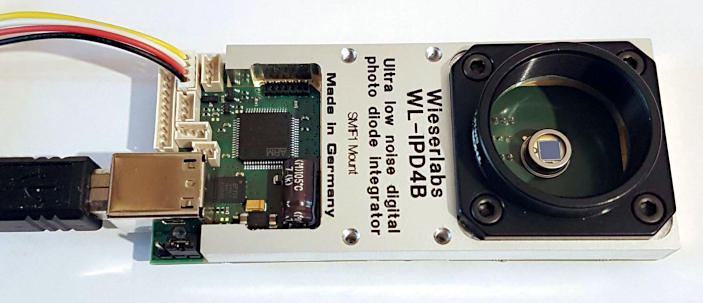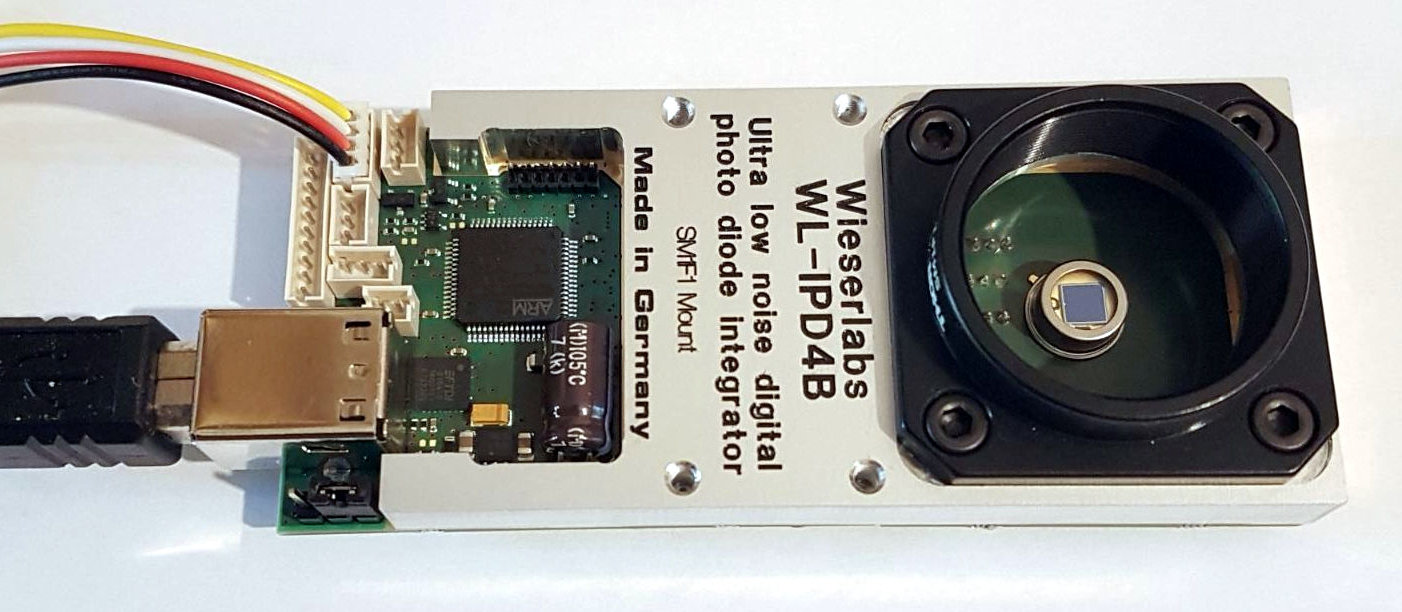The IPD4B is a highly-integrated boxcar integrator designed to be attached directly to up to four photodiodes. After a trigger pulse, all four inputs are integrated simultaneously for an adjustable amount of time between 6 μs and 1 second (boxcar integrator). The measurement is digitized using integrated 20 bit analog-to-digital converters with ultra low noise and exceptional dynamic range. Integration results are transferred over the USB link to a computer (alternatively: 3.3 V UART or SPI slave).
In a triggered mode, the IPD4B can continuously acquire four signal measurements and transfer them over the USB link at a trigger rate of up to 1.1 kHz. This allows shot-to-shot measurements in systems with 1 kHz repetition rate. Internal triggering additionally allows gapless boxcar integration mesurements with gate times 500 μs to 1 s e.g. for monitoring. In addition to the 4 analog inputs, an external digital input is captured and reported simultaneously. This allows to tag certain measurements or to synchronize multiple integrators.
The USB interface registers itself as virtual serial port (VCP) for direct and easy integration into lab control software such as LabView. Communication uses a simple text-based protocol. Also, the Tango-Controls software package supports the IPD4B out of the box.

